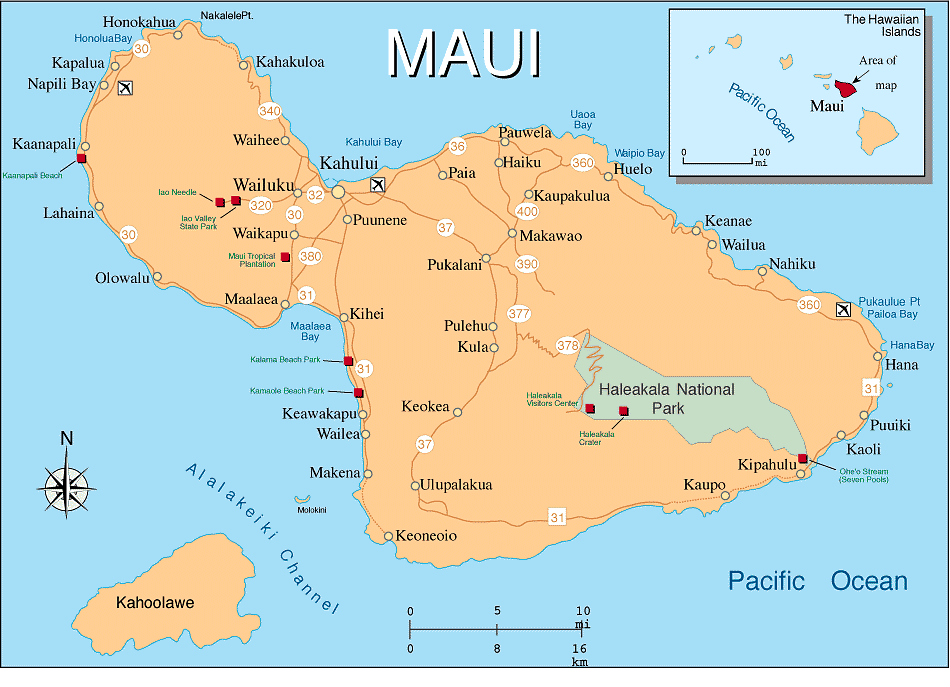
(otherwise known as "My 30th Birthday Trip to Maui, Hawaii")
Adam and I decided to celebrate my big 3-0 in a memorable way by going on an 8 day/ 8 night trip to Maui, Hawaii.
Hawaiian volcanoes are produced by a hot spot in the mantle. The hot spot is a rising current where the upper mantle melts, producing magma. Magma is less dense than the surrounding rock, and rises up to the surface. A volcano forms on top of the plate, so as if on a conveyor belt. The volcano becomes dormant as it moves away from the hot spot and frequent eruptions cease. A new volcano forms in its place.
The pacific plate moves toward the northwest at a rate of about 4 inches (10 cm) per year, so the oldest Hawaiian volcanoes are located to the northwest. The youngest and largest island, Hawaii, has three active volcanoes which have erupted during recorded history. An under-sea volcano named Loihi, located about 20 miles (32km) southeast of Hawaii, may form a new island some day.
Although you may think of the 8 major island as Hawaii, there are really 132 islands in the chain. These islands will eventually be submerged by erosion from rain, wind, waves and landslides, becoming underwater mountains called seamounts. A chain of seamounts extend from Midway Islands to Alaska. According to radiometric dating of seamount rocks, the Hawaiian hot spot has been creating volcanoes for at least 81 million years.

At 1886 sq km (728 sq mi), Maui is the second-largest Hawaiian island. The landmass originally arose from the ocean floor as two separate volcanoes, but lava flows and soil erosion eventually built up a valley-like isthmus between the two, linking them in their present form. The flat strip of interconnecting land provides a fertile setting for fields of sugarcane.
Maui's larger (and younger) eastern side is dominated by 3007m (10,023ft) Haleakala, the world's largest dormant volcano. West Maui is overlooked by the West Maui Mountains. The rainy northeast sides of both mountain masses are cut with deep ravines and valleys leading down to the coast. White-sand beaches run along much of the island's western shoreline.

Maui is about 2500 miles from Los Angeles. Note that the little crater island of Molokini (snorkel spot) is right off the coast by Makena.